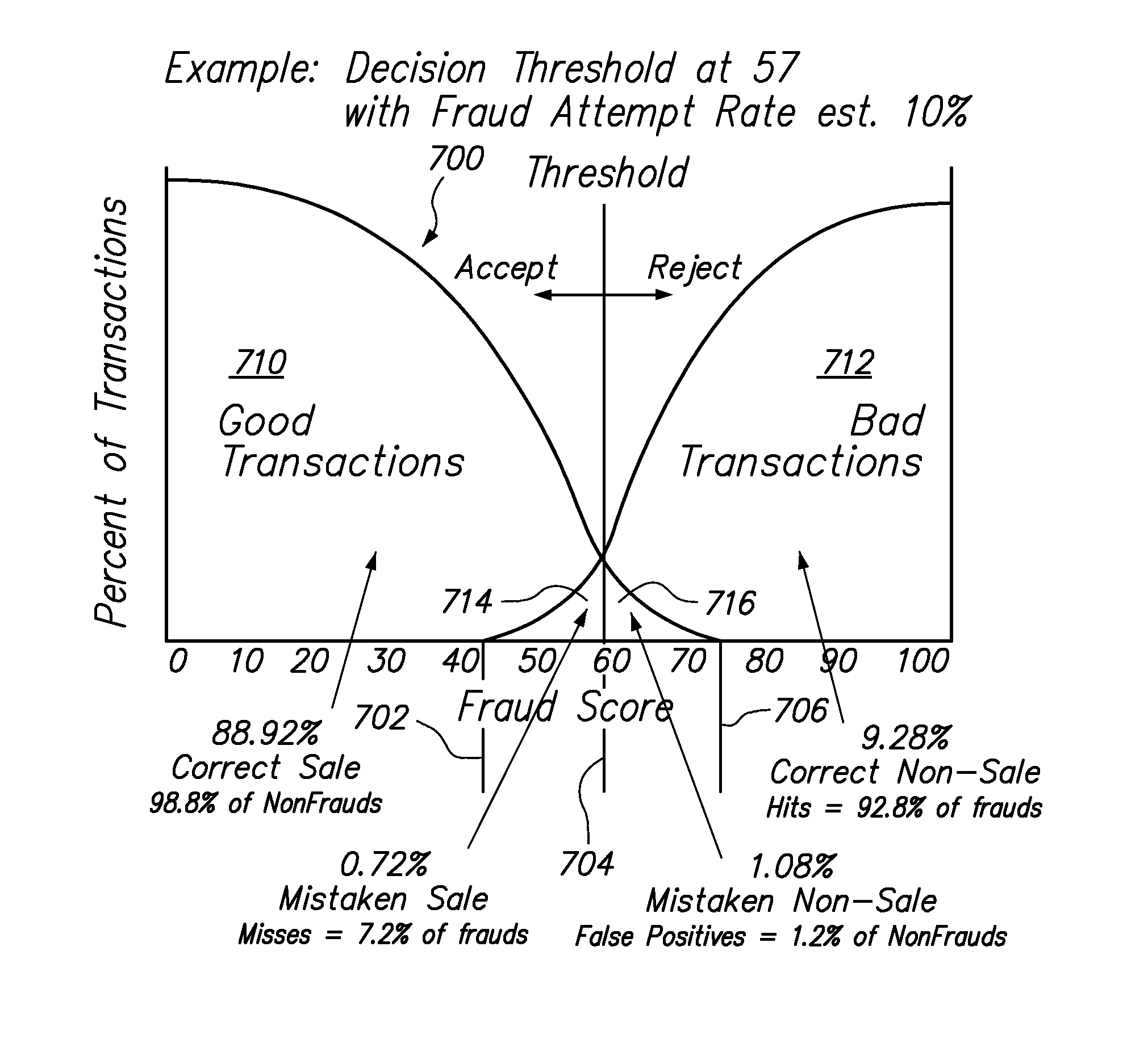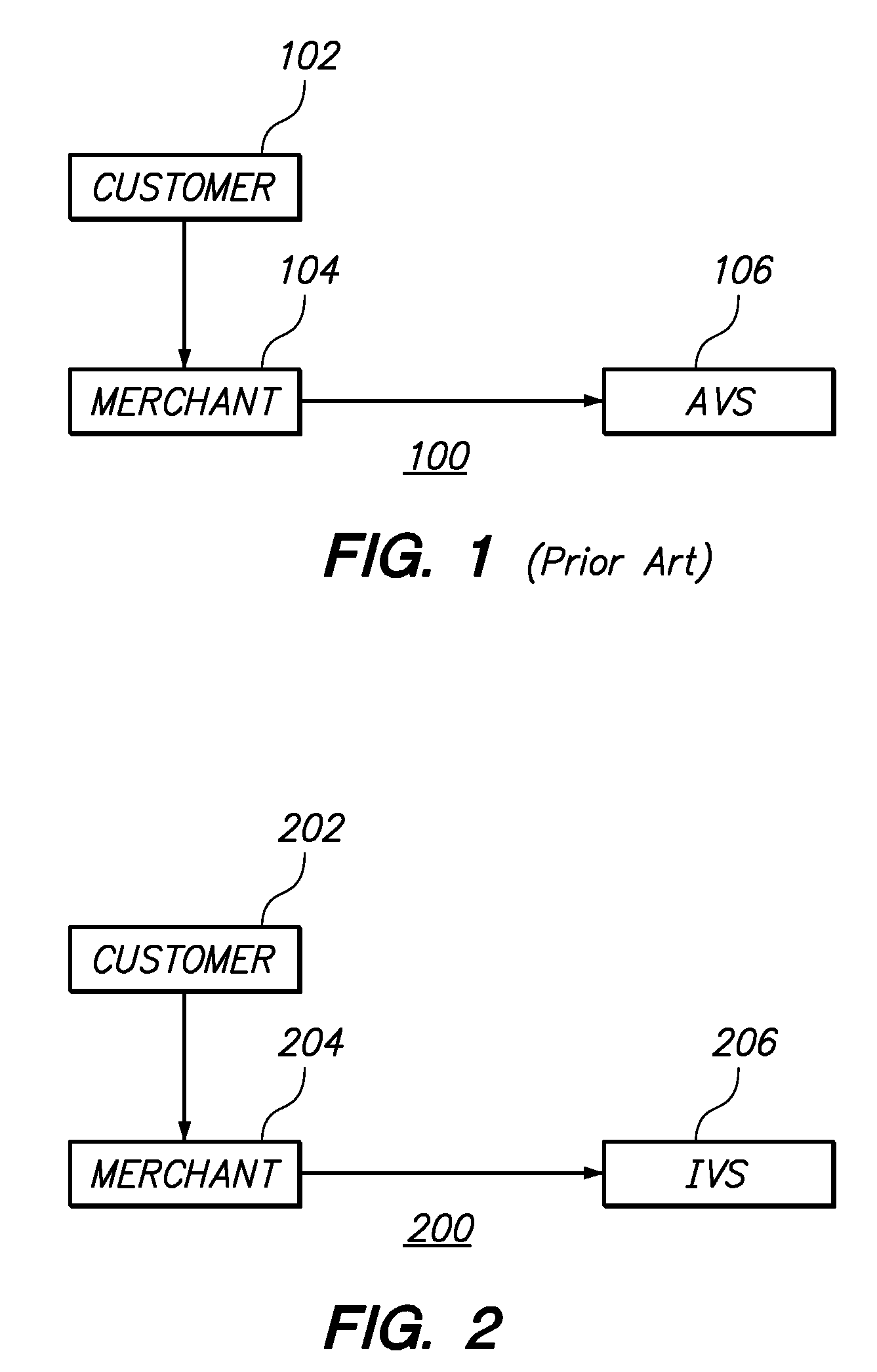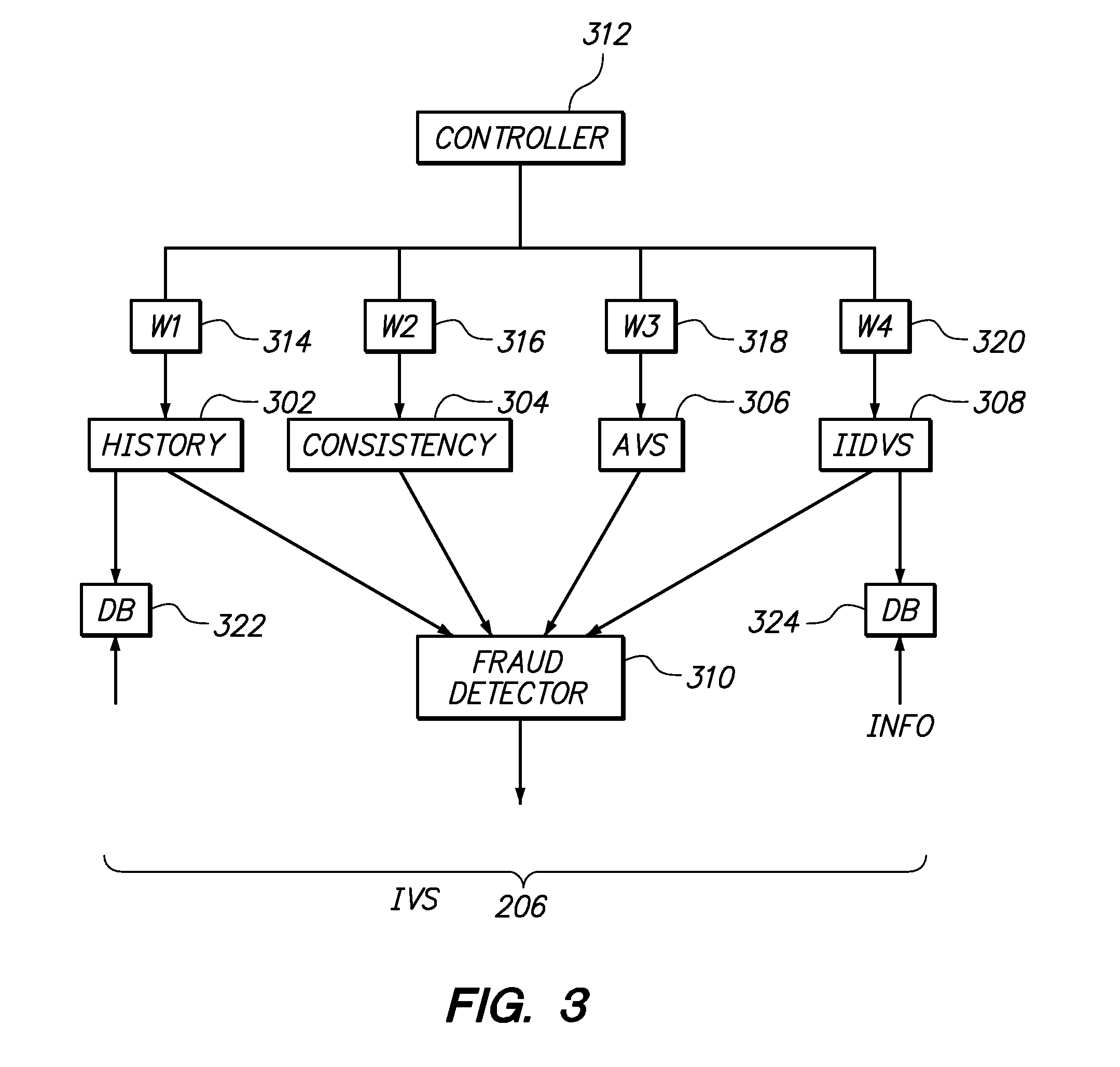Method and Apparatus for Evaluating Fraud Risk in an Electronic Commerce Transaction
a fraud risk and electronic commerce technology, applied in the field of electronic commerce transaction processing, can solve problems such as system failure to respond, fraud in transactions, and other data to validate transactions that are questionabl
- Summary
- Abstract
- Description
- Claims
- Application Information
AI Technical Summary
Benefits of technology
Problems solved by technology
Method used
Image
Examples
first embodiment
FIG. 13 is a block diagram of alternative embodiments of an Internet identity value. an Internet identity value 1390A consists of the combination of a hash value based on an email address, as indicated by block 1392, and a hash value based on a credit card BIN value, as indicated by block 1394. Using a value that includes a credit card number as a base element tends to improve accuracy for individuals who use multiple credit cards for different users. In this embodiment, each Internet identity value uniquely identifies a particular email address and card combination.
In any of the foregoing embodiments, in place of a credit card number, the system may use a value that uniquely identifies a purchase method other than a credit card. For example, if a customer uses an electronic check or a stored value card to make a purchase, a check number or card identifier may be used to create the Internet identity value.
second embodiment
Other combinations of values may be used. Referring again to FIG. 13, an Internet identity value 1390B consists of the combination of a hash value based on an email address, as indicated by block 1392, and a hash value based on a credit card BIN value, as indicated by block 1394, and a hash value based on a shipping address, as indicated by block 1396. This alternative improves accuracy where a plurality of orders use different email addresses and credit card numbers but are all shipped to the same address, especially in the case of residential deliveries.
Still other values could be used. For example, an Internet identity may comprise a first hash value of an prospective purchaser's host IP address, in combination with a second hash value of an email address of a prospective purchaser carried, in combination with a third hash value of a card bank identification number of the prospective purchaser and a fourth hash value based on a shipping address of the prospective purchaser. As an...
PUM
 Login to View More
Login to View More Abstract
Description
Claims
Application Information
 Login to View More
Login to View More - R&D
- Intellectual Property
- Life Sciences
- Materials
- Tech Scout
- Unparalleled Data Quality
- Higher Quality Content
- 60% Fewer Hallucinations
Browse by: Latest US Patents, China's latest patents, Technical Efficacy Thesaurus, Application Domain, Technology Topic, Popular Technical Reports.
© 2025 PatSnap. All rights reserved.Legal|Privacy policy|Modern Slavery Act Transparency Statement|Sitemap|About US| Contact US: help@patsnap.com



